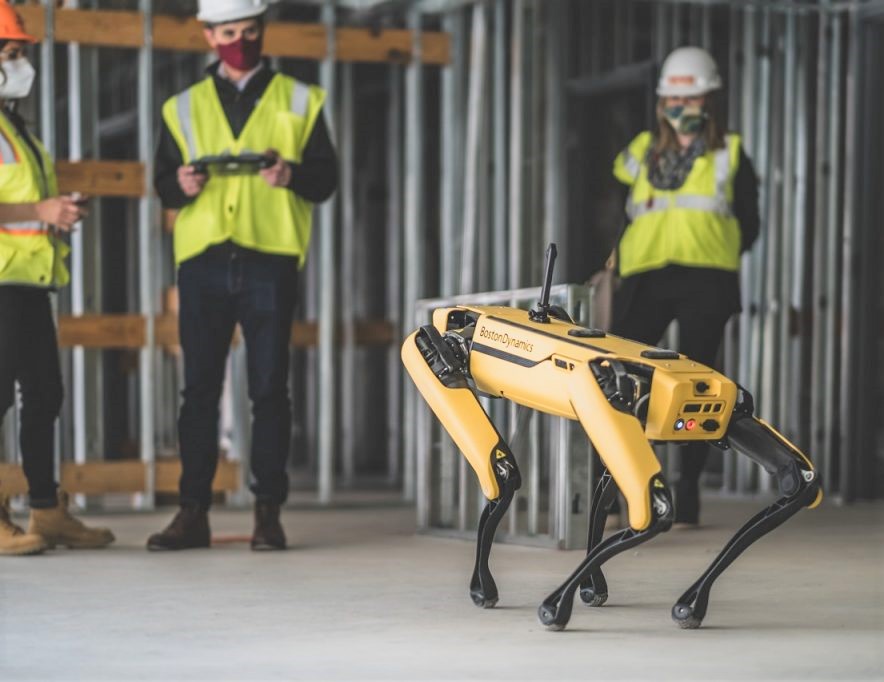
Virginia Tech researchers are unleashing Spot, an autonomous robot dog on university construction sites to investigate the applications of using robots to monitor construction progress.
Faculty and students from Myers-Lawson School of Construction are partnering with the Division of Campus Planning, Infrastructure, and Facilities and industry sponsor Procon Consulting to deploy Spot, developed by Boston Dynamics, to conduct this innovative research.
The ongoing experimental investigation is exploring whether construction progress monitoring – a traditionally human-dependent, labor-intensive, and error-prone process – can be improved by leveraging autonomous robotic technology to lead the systematic collection of data in construction environments.
Six months into the yearlong study, the team recently published its initial findings, which include operating procedures required to launch legged robots in dynamic construction settings and early opportunities and limitations in using robots in this capacity.
Three construction sites on the Blacksburg campus are serving as the study’s backdrop: the Creativity and Innovation District Living-Learning Community, Holden Hall, and the Student Athlete Performance Center.
Within the job sites, construction management students and researchers navigate Spot via remote control. They capture hundreds of 360-degree photographs of construction progress using the camera and HoloBuilder construction monitoring app mounted atop the robot dog.
For the students engaged in the study, every interaction with Spot has brought a new opportunity to put classroom knowledge into practice.
“We’ve learned quite a bit about Spot and its autonomous capabilities, particularly what it can and can’t do right now,” said Srijeet Halder, a Ph.D. student studying automation and robotics in construction. “It will be very interesting to see how the technology evolves in response to human intervention and the operational foundation we are building today through our research,” Halder said. “Future applications for autonomous robots on construction sites could include everything from remote inspections, geo-locating utilities to support maintenance efforts, safely identifying gas leaks, and much more.”
The research project is expected to conclude in the fall of 2021.


